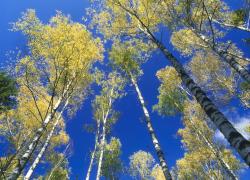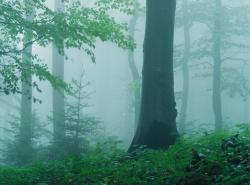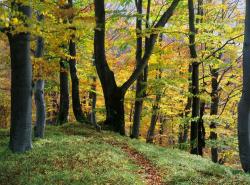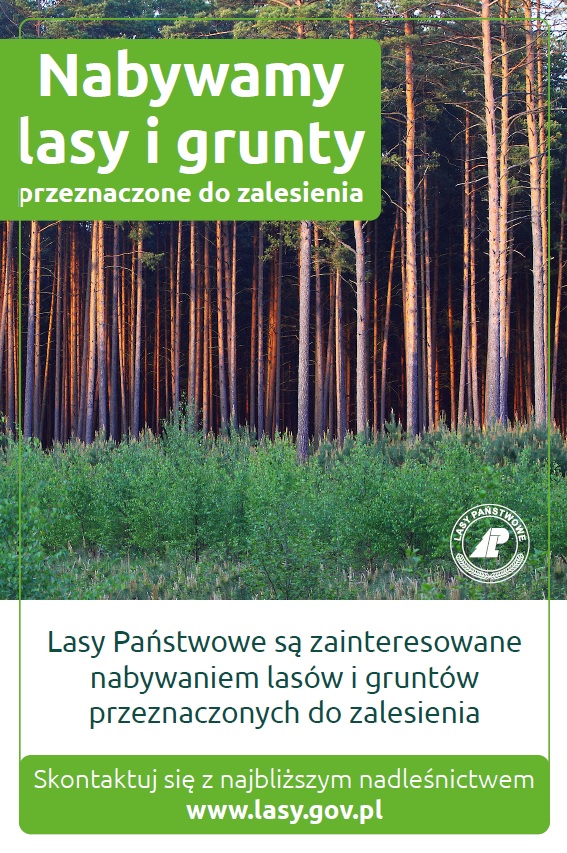 Asset Publisher
Asset Publisher
The State Forests National Forest Holding
The State Forests National Forest Holding is the largest organisation in the European Union managing forests, which belong to the State Treasury and celebrating its 90 anniversary this year.
Presently, we manage the area of one third of Poland's territory. Not long after the end of the Second World War, there was only 21 % of the area. Every year we plant 500 million of new trees, as we want Polish forests grow all the time.
Every year Polish foresters plant 500 million of trees.
85 % of nature reserves in Poland are located within the State Forests. 40 % of the forests managed by General Directorate of the State Forests are protected within the framework of European network Natura 2000. We fight against many threats: natural disasters, plaques of insects, trees' diseases, fires, pollutions, as well as poaching and vandalism.
We take care the forestry supplying the market with timber, as ecological and universal material, to be carried on in accordance with rules of balanced development (photography P.Fabjański).
One of our major tasks is making forests accessible to the society. We invite you to take advantage of these beautifully located within the forest wilderness holiday resorts, forester's lodges or guest rooms. That is for you, we create thousand kilometres of hiking trails, cycling paths or camping sites. All the above mentioned, you can find in service www.czaswlas.pl.
We also take care the forestry supplying the market with timber, as ecological and universal material, to be carried on in accordance with rules of balanced development. We obtain over 30 million of cubic meters of wood annually, twice as much as at the beginning of the nineties of the XX century.
Despite of this, the average of wood abundance per hectare of our forests is one fourth bigger than 20 years ago and 40% bigger than the average of European Union currently amounts.
In Poland in sectors connected with the forestry, there work about 375 thousand of people. It means that each 40 working Pole works in the forest.
In Poland in sectors connected with the forestry, there work about 375 thousand of people. It means that each 40 working Pole works in the forest. The sector of wood processing works out approximately 8 % of our GDP (Gross Domestic Product). Among others, thanks to the timber from the State Forests Poland is the 10 largest producer of furniture in the world, and the 4 largest furniture exporter.
The State Forests employ 25 thousand people. That way we are the 9 biggest employer in Poland. Among the largest companies in our country it takes 22 place in respect of its incomes and 11 place in respect of its profits. The value of assets, we manage, reaches 300 million zl. If we add social values, it will be worth one billion zlotych. We do not use money from the budget, but we earn money on our own to support the business. In spite of the financial crisis, since 2002, we continuously note down profits. Moreover, we pay taxes amounting 1,3 billion zl annually.
87 % of Poles think, the foresters are competent. We willingly share our knowledge of Polish forests, of their history and of nature values with the others. We publish books, periodicals, brochures; we also administer the website www.lasy.gov.pl . For children, the youth and teachers, we prepared internet service "E-lynx' Lynx Forest" (www.erys.pl). Our staff has supported schools in field of nature education for years. We also organise many actions to let people broaden their knowledge about forest, nature and ecology.
 Asset Publisher
Asset Publisher
Nabywamy lasy i grunty
Nabywamy lasy i grunty
Jakie są zasady skupu gruntów pod nowe lasy wyjaśnia nasz krótki przewodnik:
Jestem zainteresowany sprzedażą. Co mam zrobić?
Przede wszystkim ustalić w zasięgu administracyjnym jakiego nadleśnictwa leży nieruchomość. Skierować ofertę do nadleśnictwa, precyzyjnie opisując działkę: wskazując dokładny adres ewidencyjny. Wcześniejszego uregulowania wymagają też sprawy własnościowe, jak np. Dziedziczenie.
Jakimi gruntami będą zainteresowane Lasy Państwowe?
Rodzaj gruntów i warunki ich zakupu określa ustawa o lasach. Art. 37 wymienia, że Lasy Państwowe mogą nabyć „lasy, grunty przeznaczone do zalesienia lub inne grunty lub nieruchomości, jeżeli jest to uzasadnione potrzebami gospodarki leśnej i nie narusza interesu Skarbu Państwa”.
Przede wszystkim grunty sąsiadujące
Szczególnie istotną wartość mają grunty, które bezpośrednio przylegają do obszaru zarządzanego przez Lasy Państwowe, oraz takie, gdzie istnieje możliwość zniesienia współwłasności lub regulacji przebiegu granicy polno-leśnej. Zdarzają się sytuacje, w których w sąsiedztwie lub nawet wewnątrz terenu gospodarowanego przez Lasy Państwowe usytuowany są enklawy innej własności. Z takimi sytuacjami mamy do czynienia głównie na Mazowszu i w Polsce wschodniej. Status gruntów można zweryfikować w internetowym Banku Danych o Lasach - https://www.bdl.lasy.gov.pl/portal/
Ile zapłacą nadleśnictwa?
Cena zakupu jest uzależniona od wielu czynników, m.in. od położenia i kształtu działki, gatunków drzew, które na niej rosną, wieku drzewostanu i stanu sanitarnego. Każdy zakup na rzecz Skarbu Państwa poprzedza wycenarzeczoznawcy majątkowego.
Kontakt do Nadleśnictwa Lubniewice:
Nadleśnictwo Lubniewice
ul. Jana Pawła II 34, 69-210 Lubniewice
E-mail: lubniewice@szczecin.lasy.gov.pl
tel: (095) 755 84 00
fax: (095) 755 70 44
www: https://lubniewice.szczecin.lasy.gov.pl/


 fot. Paweł Fabijański
fot. Paweł Fabijański
 fot. Paweł Fabijański
fot. Paweł Fabijański
 fot. Paweł Fabijański
fot. Paweł Fabijański



